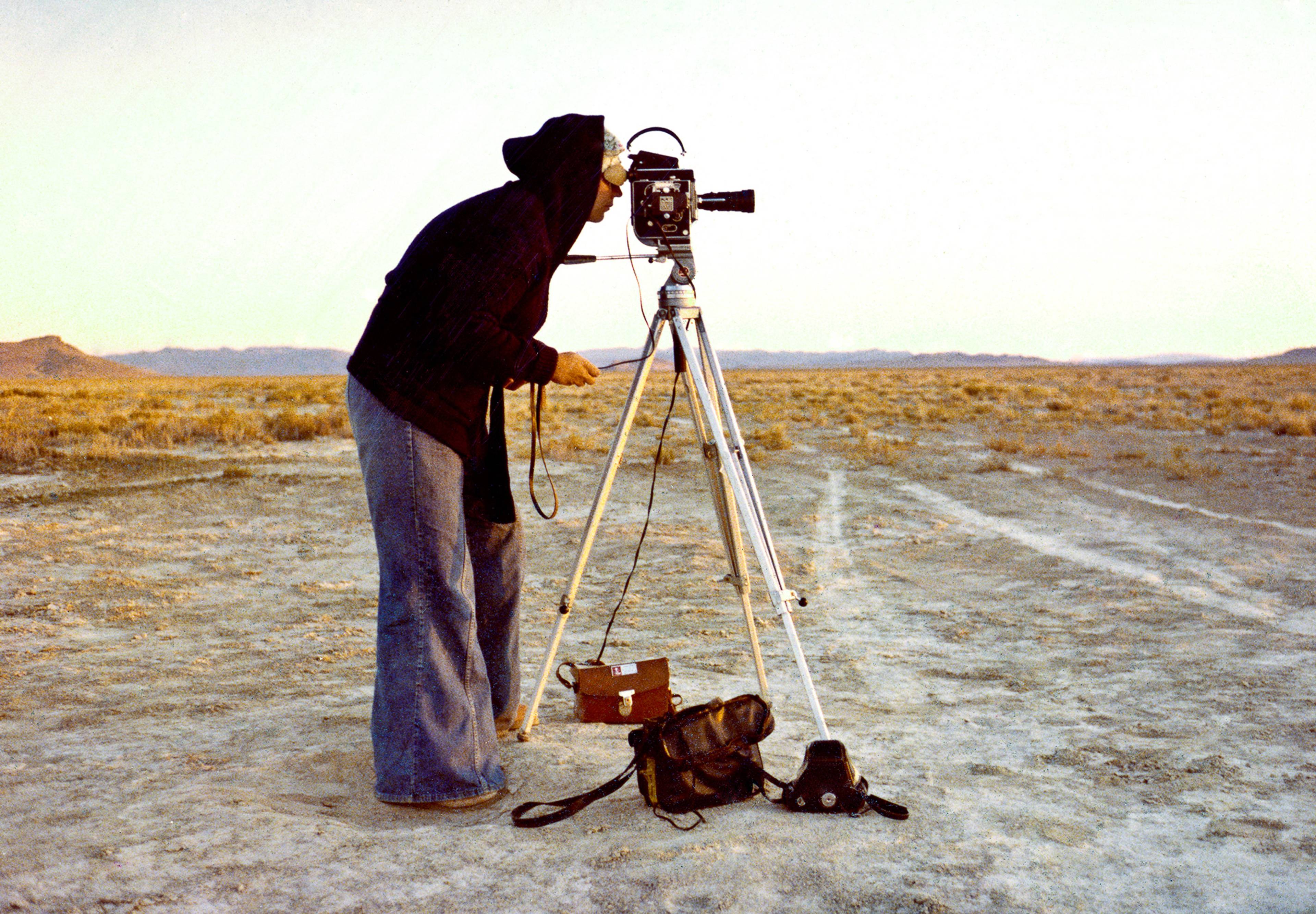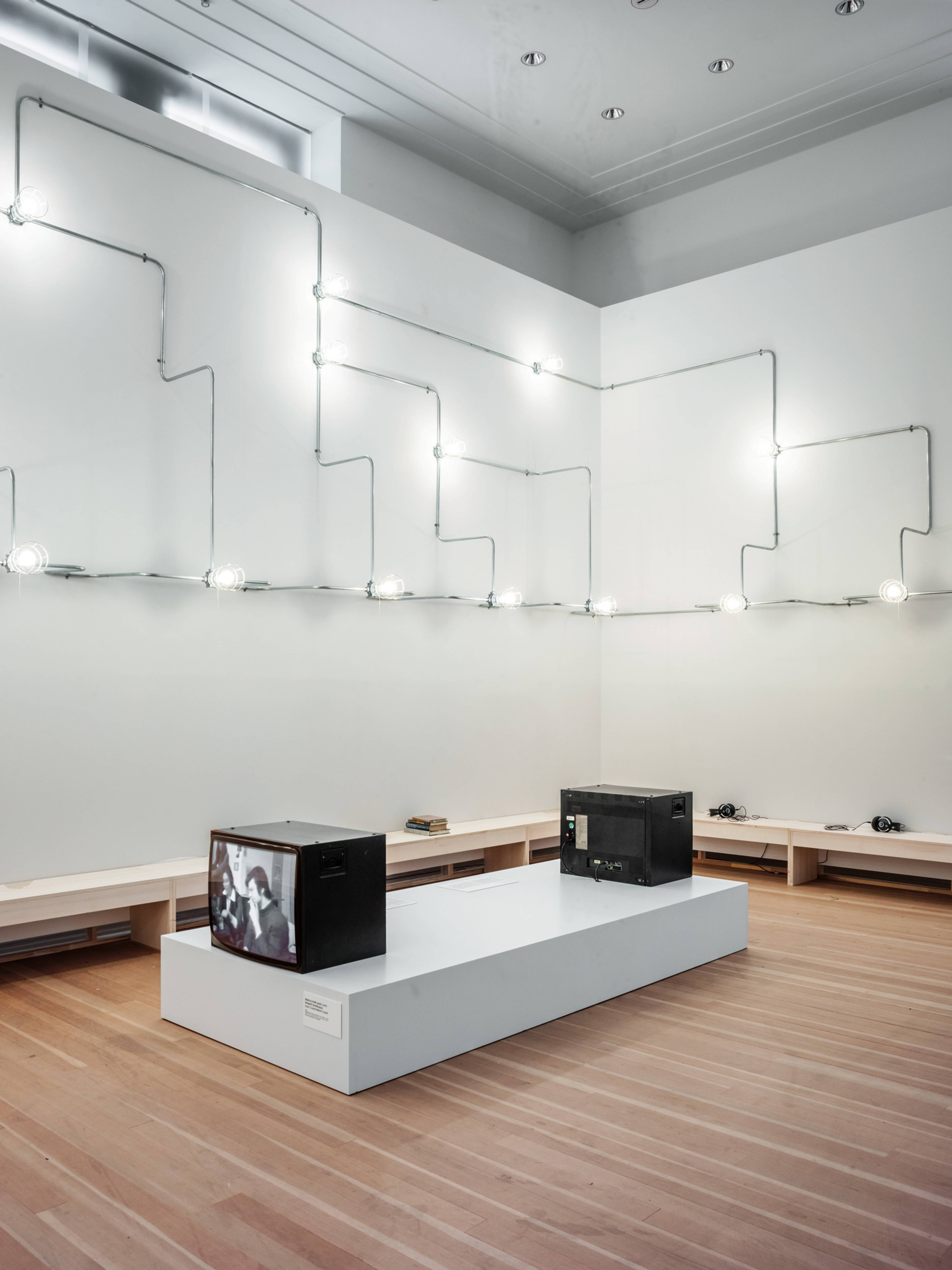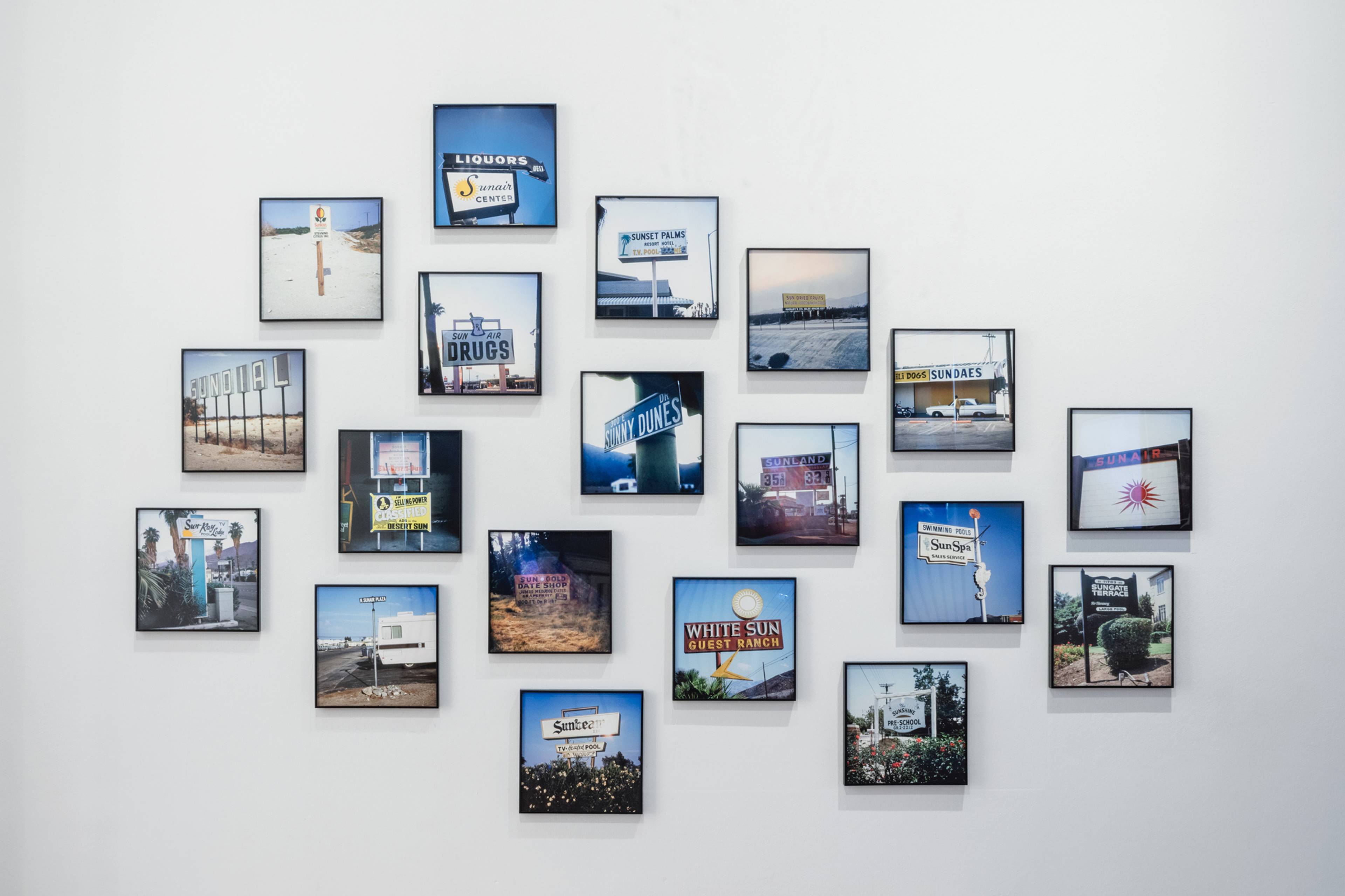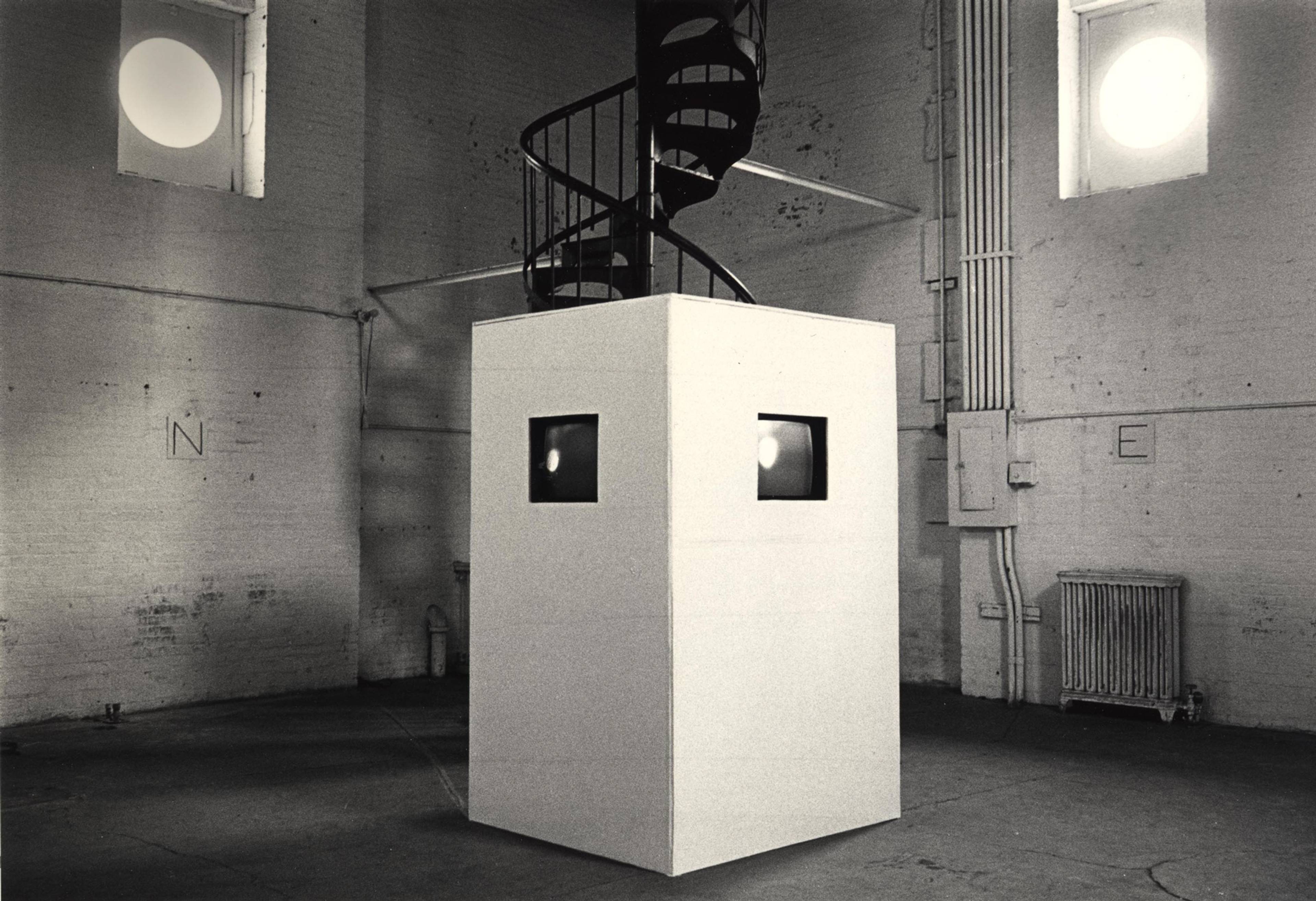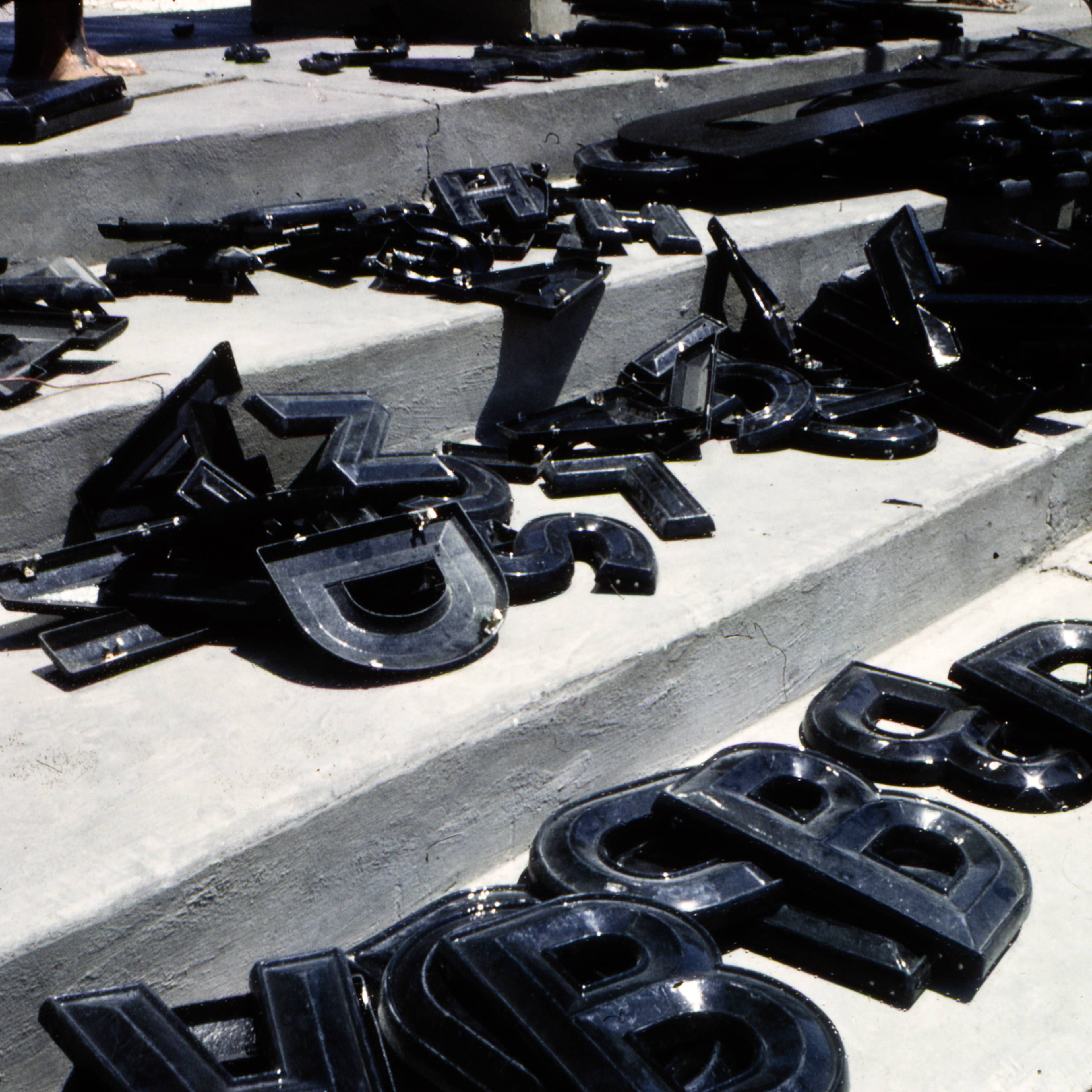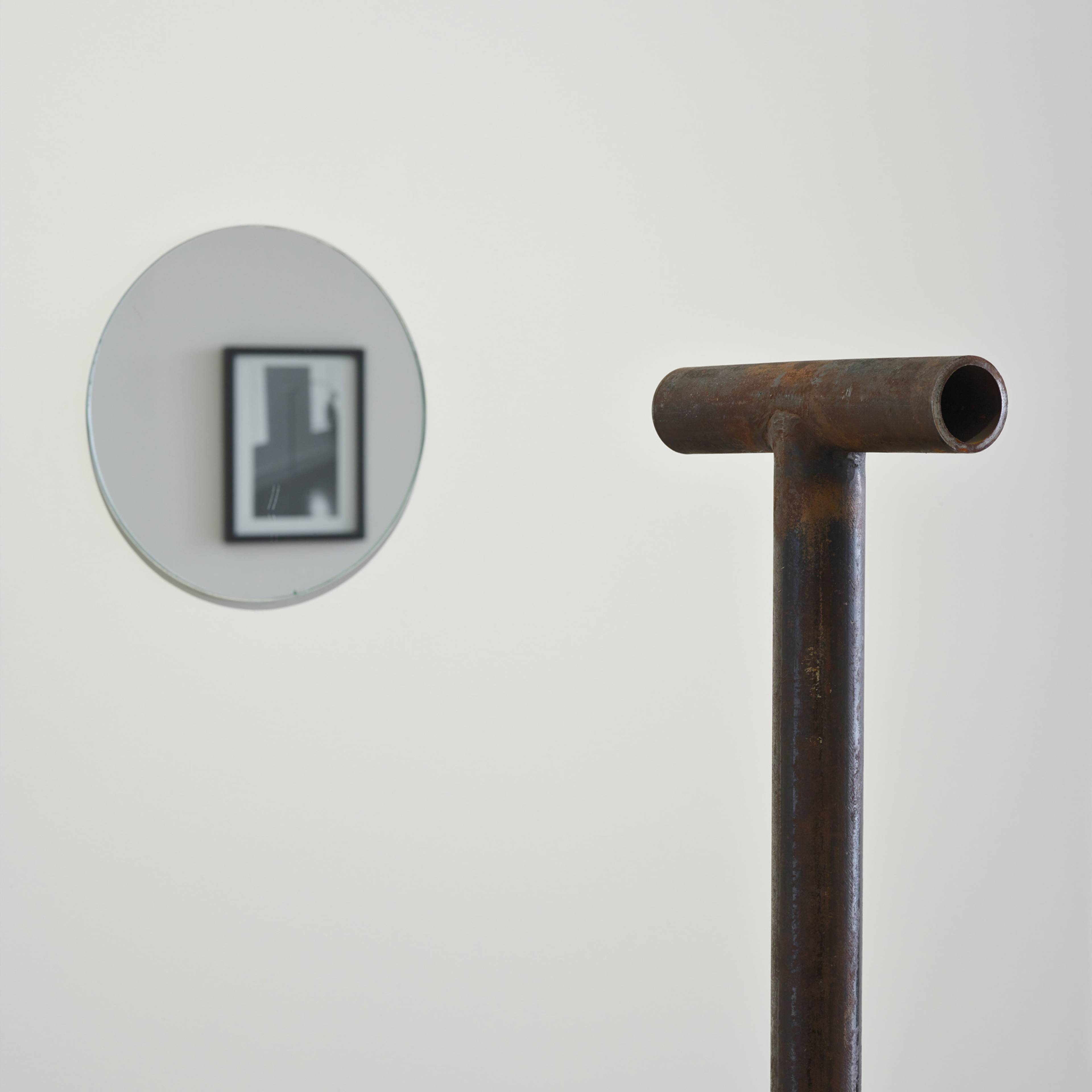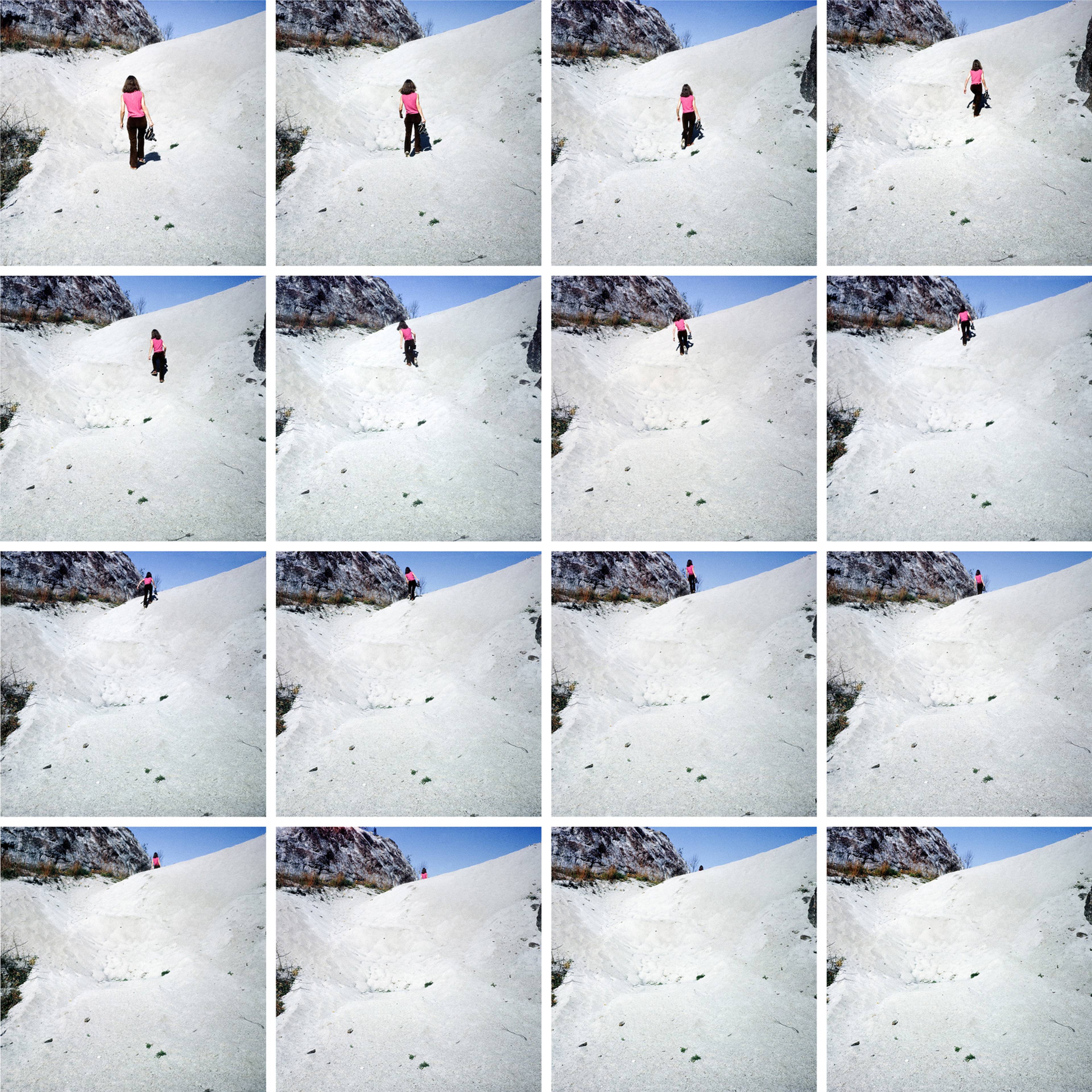A few rooms into “Circles of Light,” we find East Coast/West Coast (1969), a twenty-three-minute video shot in Joan Jonas’s Manhattan studio. It features Nancy Holt (1938–2014) and Robert Smithson improvising deadpan caricatures of, respectively, an intellectual New York artist and a West Coast space cadet. He tells her to take acid because she’s too uptight and announces that, since arriving in NY, he’s bought ten bicycles; she says he overestimates the impact of one’s working environment. The film – which, curator and art historian Cornelia Butler has persuasively argued, ventriloquizes Holt’s divided personality, both freewheeling nature-lover and tightly wound, metropolitan conceptualist – is goofy in a way that the artist’s work won’t be, but also serious. It playfully illuminates a key issue in her practice: the modular relationship between what you perceive and where you’re perceiving from.
View of “Circles of Light,” Gropius Bau, Berlin, 2024. Photo: Luis Kürschner
Ugh, I mentioned the husband upfront, albeit in an uxorious, supportive role. But the couple’s collaborations get a room to themselves here and spill into others, signaling a lack of curatorial anxiety that Holt could be overshadowed today, a decade after her death. In the fourteen years since her first retrospective, and particularly following the establishment of the Holt/Smithson Foundation as her will stipulated, her practice has gotten something like its due, and “Circles of Light” is a pantheon artist’s retrospective rather than a rediscovered one’s. It gearshifts through the polyglot, nontraditional media of Holt’s emergent and peak years: concrete poetry, video, photography, light installation, land art. It also affirms her as the more legible and timelier artist of the two, inventively prowling around how, or to what extent, one might touch reality, particularly the natural world, and the upshots, often implicitly ecological, of doing so.
View of “Circles of Light,” Gropius Bau, Berlin, 2024. Photo: Luis Kürschner
Points of View, 1974. Installation view: Clocktower Gallery, New York
That’s apparent upfront in Stone Ruin Tour I (1967), a (now-digitalized) slide projection of black-and-white photographs of an overgrown, stone-walled garden in New Jersey, accompanied by vitrined stills, a typescript, and Holt’s voiceover, the latter guiding the listener, step by step, through this unassuming spot. The result is matter of fact, yet tinctured with fairytale-grotto enchantment; meanwhile, a tension emerges that’ll become characteristic in Holt’s practice. While vividly emplacing us, she dictates where we look. Her poetry, seen as framed typescripts, wrestles with this: 1972’s Vision Fixed begins, ambivalently, “Vision Fixed/Vision Concentrated/Vision Demarcated/Vision Located/Vision Concretized/Vision Re-focused/Vision Circumscribed.” Sometimes, her art makes you want to look where she’s pointing, then stubbornly look somewhere else. By 1974’s multi-channel video Points of View, she’d squared that circle, highlighting subjectivity’s countermanding vagaries. Four screens face outward, forming a cube. Each channel, filmed through a circular aperture, looks through a window in a Manhattan gallery towards a different cardinal point. Holt then showed one set of footage each to a different artist couple, and invited them to discuss what they saw, which also involved reflecting reflexively on what they were doing.
All these phenomenological concerns overlapped with an increasing gravitation to nature, triggered by a life-changing 1968 trip to the Nevada desert, during which, Holt later said, she felt both a loss of self and an unfiltered perception of the world. Much of her outdoor work rehearses selective, intense attention using anchoring devices: colored dots on rocks and gates along a footpath in Dartmoor, England, for the twenty photographs in Trail Markers (1969); photographic closeups of tree textures in Wistman’s Wood (1969); signs of human presence in various photographic series of inhospitable pine barrens in New Jersey and Alaska. Looking at this work today can feel like rehabbing vision and patience for tech-frazzled sensibilities, à la artist Jenny Odell’s book How to Do Nothing (2019). But it’s also just a run-up for Holt’s outdoor works using tubular apertures, fixed orientations on less-than-fixed scenes, such as Views Through a Sand Dune (1972) – a cement/asbestos pipe that, installed in a dune on Narragansett Beach, Rhode Island, gazed out at the waves and the time of day, while lending the dune structural integrity – and, of course, the fluent fusion of modern technology and ancient nature-worship that is Sun Tunnels (1973–76).
Concrete Poem, 1968
Sun Tunnels, 1973–76, Great Basin Desert, Utah. Photo: Nancy Holt
Locator with Mirror, 1972
Over the Hill, 1968
Holt’s 1978 documentary film of the making, transporting, installing, and use of the concrete Tunnels, which vignette sunrise and sunset on the summer and winter equinoxes, is not discursive, but a long, pragmatic, meditative lead-up to the all-important sunup/sundown. It hitches the viewer to a lineage of humans connecting themselves with planetary rhythms, in a way that likely already felt dangerously lost in the mid-70s. And it is, like so much of Holt’s work, an act of generous, even humble redirection. If you’re looking at this literally open-ended object, or hung up on art and artists at all, you’re looking in the wrong place, gazing directly at a pointing finger; the art is just a transit to something much bigger than itself. Yes, Holt is gone now. But she was gone then, too.
___
“Circles of Light: Experiments with Sound, Image, Objects 1966–1986”
Gropius Bau
22 Mar – 21 Jul 2024


